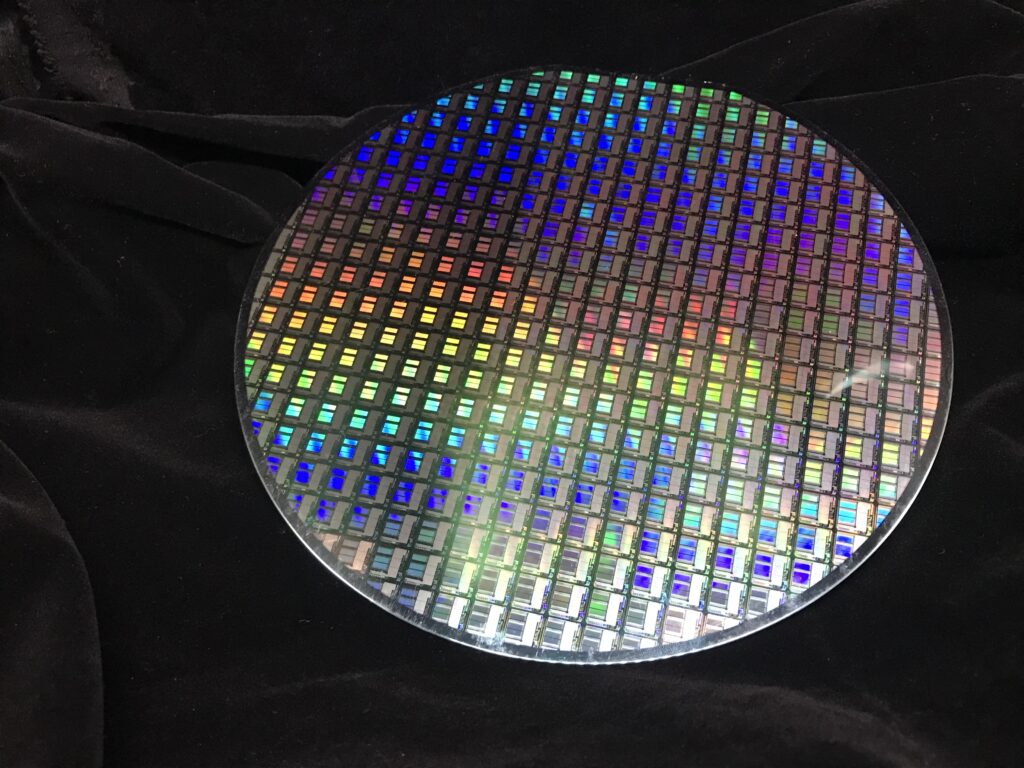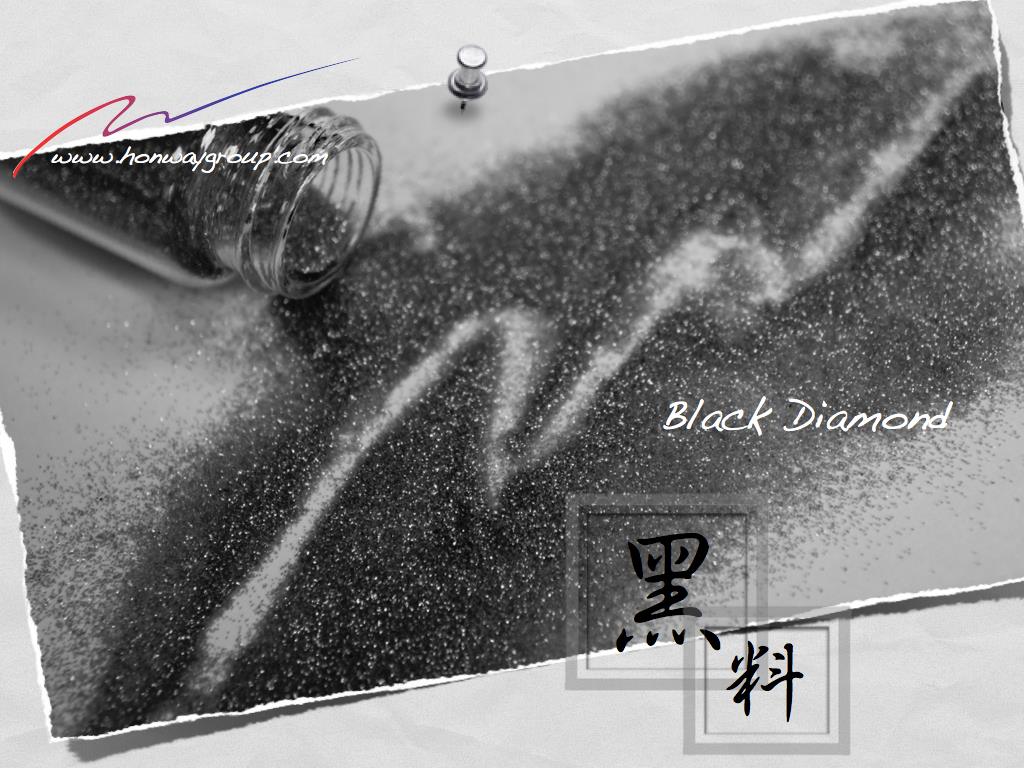With the rapid development of 5G, electric vehicles, high-frequency radar, and advanced optoelectronic components, traditional silicon materials are increasingly struggling to meet performance demands. Compound semiconductors like Silicon Carbide (SiC), Gallium Nitride (GaN), and Gallium Arsenide (GaAs), due to their wide bandgap, high thermal conductivity, high frequency, and high-power characteristics, have become key materials for next-generation electronic components. However, compared to silicon wafers, the difficulty of polishing and surface treating these high-hardness materials has increased significantly, posing a major challenge to achieving component performance and improving mass production yield.
Table of Contents
Compound Semiconductor Polishing: Why is it a Bottleneck and a Key to Performance?
Although compound semiconductor materials like SiC and GaN possess excellent properties such as wide bandgap, high thermal conductivity, and high voltage tolerance, which can significantly enhance component performance, their extreme material properties also present unprecedented challenges in the processing stage.

| Category | Elemental Semiconductor | Compound Semiconductor | ||
| Representative Materials | Silicon (Si), Germanium (Ge) | Gallium Arsenide (GaAs), Indium Phosphide (InP) | Silicon Carbide (SiC) | Gallium Nitride (GaN) |
| Characteristics | Currently the main semiconductor material; low cost, mature technology, complete supply chain; suitable for everyday applications. | High frequency, high efficiency, low power consumption; but cannot withstand excessively high voltage. | High temperature and high pressure resistance, fast heat dissipation, fast switching speed, low loss, radiation resistant; suitable for 100KW-1MHz applications. | High frequency, high efficiency, high temperature and high pressure resistance. Suitable for applications below 1MW and above 100kHz. |
| Process Challenges | Requires precise processing of wafer surfaces and edges. | High requirements for wafer flatness and surface finish. | Material is extremely hard, high processing difficulty; requires ultra-precision grinding and polishing. (This is Honway’s professional field in diamond polishing slurry and grinding wheels. ) | Material is extremely hard, high processing difficulty; requires ultra-precision grinding and polishing. (This is Honway’s professional field in diamond polishing slurry and grinding wheels. ) |
Taking single-crystal SiC as an example, its Mohs hardness reaches 9.2~9.6, close to that of diamond, making it highly brittle with low fracture toughness. It also has high chemical inertness and sensitivity to surface defects. These characteristics make every stage, from grinding to polishing, exceptionally difficult. As the processed area expands, the pressure on machining uniformity and yield increases, and the processing difficulty multiplies.
Core Challenges in the Grinding Phase
In the traditional mechanical grinding phase, to remove the deformed layer from the wafer surface and perform initial planarization, it is often necessary to apply high pressure and use coarse abrasive particles. However, due to its high hardness and low toughness, SiC is highly susceptible to brittle fracture from localized stress concentration, which in turn forms a deep fractured layer and Subsurface Damage (SSD). This SSD is not only difficult to detect but also directly affects subsequent polishing accuracy and component reliability. Furthermore, grinding processes are often time-consuming and lack stability, easily leading to non-uniform surface flatness and thickness control, which further extends the subsequent CMP time to 2-3 hours or more, significantly reducing overall productivity and manufacturing efficiency.
CMP Polishing: The Final Hurdle for Performance and Reliability

While the CMP (Chemical Mechanical Polishing) process can further improve surface roughness and SSD, if the preceding grinding damage is too deep or non-uniform, the CMP process also becomes more challenging and risky. Especially for materials like SiC, CMP must precisely regulate the chemical reaction rate and mechanical force to effectively form and remove a soluble oxide layer. Otherwise, a damage-free mirror finish cannot be achieved.
These seemingly minor processing damages can actually have a severe impact on the core electrical performance of components, for example:
- Decreased carrier mobility
- Abnormal increase in leakage current
- Component switching delay or insufficient thermal stability
- Reliability issues or even failure after packaging
In addition, SSD and surface defects can have a cascading effect on subsequent processes like etching, thin-film deposition, metallization, and packaging, directly leading to a decrease in the yield of the entire wafer.
Therefore, for compound semiconductors, CMP polishing is not just a processing step for material planarization; it is a critical bottleneck technology that determines the electrical stability and production yield of components. Only through specially designed polishing liquids, polishing pads, CMP dressers, and precise processing parameters can one balance the material removal rate, surface quality, and damage control, and ensure that the polishing pad surface maintains optimal flatness and cutting force during long-term processes, truly unleashing the inherent performance potential of the material itself.
How Polishing Technology Overcomes the “Hard” Challenges of Compound Semiconductors
As compound semiconductor technology becomes increasingly prevalent, and especially as high-hardness materials like SiC and GaN move towards 8-inch specifications, traditional wafer grinding and polishing technologies are facing severe tests. For these materials with extreme physical properties, Honway Precision tackles the challenges from multiple angles—consumable materials, process control, and mechanical design—to provide a comprehensive grinding and polishing solution, helping the industry break through bottlenecks and achieve stable process quality and high-yield output.
Grinding Phase: Stable Control from Rough to Fine Grinding
For materials with extremely high hardness and brittleness, such as SiC with a Mohs hardness of 9.2 to 9.6, traditional grinding tools often face problems such as long processing times, excessive SSD, non-uniform thickness, and severe surface damage.
To address this challenge, Honway provides high-performance grinding wheels and grinding pads to achieve stable control from rough grinding, fine grinding, to the thinning process:
- Wafer-Specific Grinding Wheels: Possess a high-hardness, high-wear-resistance formulation that enables rapid material removal while suppressing micro-crack generation, reducing surface and sub-surface damage.
- Honway Grinding Pads: Enhance the stability of pressure distribution and carrier flatness, ensuring the wafer does not warp during grinding and controlling thickness variation (TTV) and warpage (WARP).
- CMP Dressers: In the CMP process, dressers use diamonds or other high-hardness particles to precisely condition the polishing pad, removing residues and chemical deposits, restoring surface roughness, and preventing glazing that affects removal efficiency during long-term use.
In addition, Honway’s nano-grade diamond polishing liquid, specially designed for high-hardness materials, incorporates surface structure modification and spherical diamond particles to further reduce scratches and residual stress, lessening the burden on subsequent CMP.
CMP Polishing: Mechanical-Chemical Synergy for Ultra-Flat, Damage-Free Surfaces
The flatness and defect control of compound semiconductor surfaces are crucial for component performance, making CMP (Chemical Mechanical Polishing) a core process in the entire manufacturing flow. Honway, with its highly integrated polishing consumable design and dressing technology, achieves a mirror-like finish for compound semiconductors:
- Five-Layer Structure CMP Polishing Pad: Compared to traditional pads, Honway’s innovative five-layer pad design has excellent rigidity, cushioning, and dynamic pressure adjustment capabilities. It effectively controls the removal rate and surface uniformity, supporting different materials and polishing liquid types (such as CeO₂, Al₂O₃, diamond, etc.).
- Micro-pore and Groove Pattern Design: Improves slurry flow and bubble venting efficiency, reducing dry friction and the risk of scratching.
- Long Lifespan and Deformation Control: Even under high-load, long-term operations, it maintains stable pressure and uniform polishing effects, improving process consistency and extending replacement cycles.
- CMP dresser: Uses diamond or high-hardness particles to precisely dress the polishing pad, removing debris and deposits to prevent glazing from affecting efficiency. For materials such as SiC and GaN, it can maintain stable cutting force and fluid distribution, extending consumable life and improving consistency.
Polishing Liquid: The Core Key to Chemical Etching and Selective Control
In compound semiconductor CMP, the ability of chemical etching and selective material removal determines the efficiency of polishing and the final surface quality. Honway offers exclusive formulations for various materials:
- Diamond Polishing Liquid: Designed for SiC and GaN, it incorporates surface microstructure optimization and spherical particles to effectively reduce processing scratches and SSD, achieving damage-free polishing during back grinding and improving the heat dissipation and reliability of power devices. (In addition to spherical diamonds, other process diamond liquid options are also available to effectively solve various polishing problems.)
- Aluminum Oxide Polishing Liquid: Suitable for planarization of silicon-based layers and metal layers, balancing a high removal rate with a low Ra value.
- Cerium Oxide and Silicon Dioxide Polishing Liquid: Exhibits high selectivity and low defectivity in STI and Low-K layer structures, particularly suitable for multi-layer structures and advanced logic processes.
Honway’s polishing liquids are all designed with nano-grade particles, providing a complete solution from rough grinding to fine polishing.
For high-hardness compound semiconductor materials, grinding and polishing are no longer simply physical removal processes; they now encompass a multidisciplinary engineering technology that integrates materials science, chemical mechanisms, and mechanical precision. Honway, ground by the very nature of the materials, integrates cutting-edge consumables such as diamond slurry, CMP polishing pads, specialized grinding wheels, and dicing blades to provide the industry with efficient, low-defect process solutions, accelerating the mass production of compound semiconductors in power devices, RF communications, and advanced packaging.
The Direct Impact of Polishing Technology on Component Performance
In the manufacturing of compound semiconductor components, the precision and stability of polishing technology are not only key aspects of process control but also directly determine the component’s ultimate electrical performance and product yield. Through the high-performance grinding and polishing consumables provided by Honway, component performance can be effectively improved on multiple levels:
- Reduced Surface Roughness, Enhanced Electron Mobility and Switching Speed: Surface flatness has a significant impact on the electron mobility of compound semiconductor components. Honway’s diamond polishing liquid, utilizing spherical diamond microparticles and surface modification technology, can greatly reduce scratches and microscopic surface roughness, effectively reducing carrier scattering and improving the efficiency of electron flow within the material. This allows components to achieve faster switching speeds and lower on-resistance, which is crucial for the performance of high-power and high-frequency application components.
- Eliminated Subsurface Damage, Ensured Electrical Stability and High Breakdown Voltage: Traditional grinding or poor polishing processes can easily create a fractured layer or stress concentration points on the wafer surface, leading to lattice defects that further affect PN junction quality. Honway’s polishing liquid and polishing pad system can precisely control the material removal rate, achieving damage-free polishing and effectively eliminating subsurface damage to protect the integrity of the crystal structure. This not only helps to increase the component’s breakdown voltage but also improves reliability and long-term stability.
- Improved Thermal Management Efficiency, Supporting High-Power Operation Needs: Compound semiconductor components are often used in high-voltage, high-temperature applications, and good thermal management performance is at the core of their stable operation. Honway’s back grinding and diamond-grade polishing solutions can produce extremely high flatness and low-damage surfaces, reducing thermal resistance and helping heat to be rapidly conducted to the heat dissipation module. This is crucial for improving the heat dissipation capability and lifespan of power components like SiC and GaN.
- Improved Process Yield and Overall Production Efficiency: Stable polishing quality can significantly reduce the defect density on the wafer surface. Honway’s high-stability polishing liquid and long-lifespan polishing pad design ensure that every wafer maintains consistency in a high-load mass production environment, greatly improving process yield. At the same time, it reduces rework and scrap rates, lowers overall manufacturing costs, and helps customers to ship stably in fierce competition.
More Information on Honway Diamond Grinding and Polishing Consumables:
To learn more about how Honway can bring breakthrough benefits to your semiconductor processes, please click the links below to explore our full range of diamond grinding and polishing consumables and technical details:
- Honway Nanodiamond Polishing Liquid Series
- Honway Precision Wafer Grinding and Polishing Pads
- Honway Grinding Wheels for Wafer Surface Grinding
- Honway Chamfering and Grinding Wheels for Silicon Wafers
- Honway Wafer Electroplated Dicing Blade
- Honway Wafer Packaging Dicing Blade – Soft Blade
- Honway Wafer Packaging Dicing Blade – Hard Blade
You can also directly “contact our Honway expert team,” and we will provide the most professional customized consultation and solutions.
Read More Related Topics
- Diamond Substrate>>>From jewelry to semiconductors: Diamonds play a key role in the next generation of thermal conductivity materials
- Compound Semiconductors>>>The secret weapon of semiconductor precision manufacturing: diamond grinding and polishing consumables, effectively improving wafer yield and performance!
- Semiconductor grinding and polishing>>>Grinding and Polishing in Semiconductor Manufacturing: Excellence from Material Selection to Consumable Empowerment
- Grinding and polishing cunsumbles>>>Innovative Grinding and Polishing Consumables: Driving the Semiconductor Industry Towards Higher Precision
- The key to ultra-flat wafers>>>The “Thin” Science of Semiconductor Grinding and Polishing: Key to Achieving Ultra-Flat Wafers
- Heterogeneous Integration and Advanced Packaging>>>Facing the Future: How Grinding and Polishing Consumables Empower Heterogeneous Integration and Advanced Packaging
We offer customized adjustments to the grinding process, tailored to meet processing requirements for maximum efficiency.
After reading the content, if you still don’t know how to select the most suitable option,
Feel free to contact us and we will have specialist available to answer your questions.
If you need customized quotations, you’re also welcome to contact us.
Customer Service Hours: Monday to Friday 09:00~18:00 (GMT+8)
Phone: +8867 223 1058
If you have a subject that you want to know or a phone call that is not clear, you are welcome to send a private message to Facebook~~
Honway Facebook: https://www.facebook.com/honwaygroup
You may be interested in…
[wpb-random-posts]
(Source of the first image: shutterstock)

